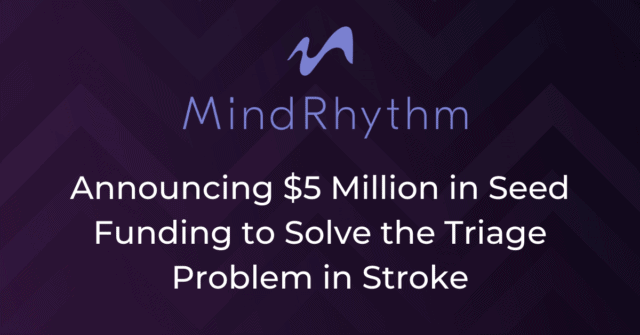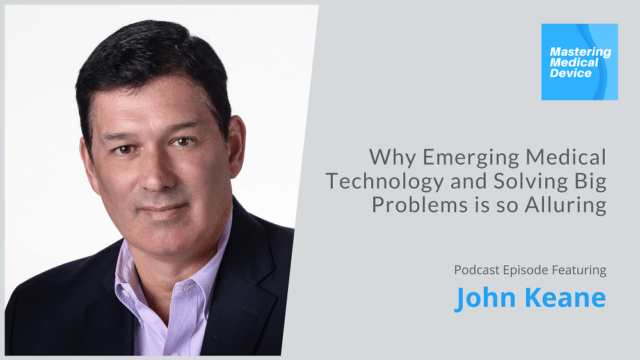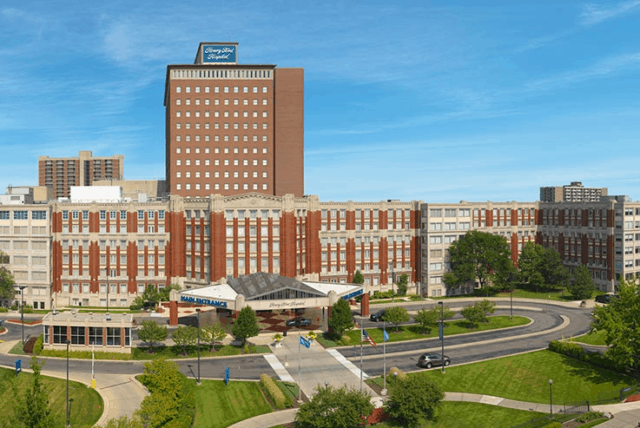Timeline
June 2025
MindRhythm Sponsors Eagle Creek Alongside Global MedTech Companies at the Annual Gathering of Eagles Meeting. Dr. Wade Smith MD, PhD, Presents MindRhythm Stroke Solutions to the Eagles-a Coalition of Physicians Serving as Influential EMS Medical Directors Throughout the U.S. and Europe
June 2025
Dr. Wade Smith MD, PhD Presents the Novel Discovery of "Sleep Bursts" at the Annual Sleep Meeting Supporting the Associated Professional Sleep Societies, American Academy of Sleep Medicine, and the Sleep Research Society
March 2025
MindRhythm Stroke Solutions Presented at FORCE-Fire Officer and Ranking Chief Executive Conference
March 2025
Dr. Wade Smith Presents Results from EPISODE-PS, the Pilot Phase of the EPISODE Family of Studies at STAIR-Stroke Treatment Academic Industry Roundtable
January 2025
First Concussed Subject Enrolled in the DISCOVERY Study: "DetectIon of ConcusSion and ReCOVERY" to Validate the Confirmation of Concussion and Objective Management of Concussion Recovery Including Subjects 4+ Years of Age
November 2024
Dr. Wade Smith Presents Key Details from the EPISODE Family of Studies at the 2024 Society of Vascular and Interventional Neurology Meeting in a Roundtable focused on a Multidiscplinary Approach to Advance Stroke Care
October 2024
Results from the Pilot Phase of EPISODE Presented by Dr. Wade Smith MD, PhD, and Dr. James Paxton, MD at American College of Emergency Physicians Annual Conference
April 2024
Results from the Pilot Phase of EPISODE Published by Academic Emergency Medicine. Results Reveal Harmony Can Reliably Identify LVO Stroke in the Prehospital Setting
December 2023
Successful Completion of Enrollment in EPISODE-VS hEadpulse for Ischemic StrOke DEtection Prehospital Study
October 2023
Dr. Wade Smith MD, PhD, Presents HeadPulse Sleep Burst Data at the World Sleep Congress Meeting in Rio de Janeiro
October 2023
FDA grants Breakthrough Device Designation for Harmony
October 2023
Best Abstract of the Year Awarded to Dr. James Paxton MD, Primary Investigator of “hEadPulse for Ischemic StrOke DEtection Prehospital Study During the COVID-19 Pandemic by American College of Emergency Physicians
August 2023
"Analysis of HeadPulse Biometric Measures Following Concussion In Young Adult Athletes" Published in JAMA Network Open
June 2023
First Patient Enrolled in Pivotal FDA Portion of EPISODE Prehospital LVO Stroke Triage Study
March 2023
Validation of HeadPulse in Recently Concussed Athletes Manuscript Submitted For Publication Officially Entitled:
"Analysis of HeadPulse Biometric Measures Following Concussion in Young Adult Athletes"
March 2023
Preliminary Results Published in Journal of Stroke Vascular Interventional Neurology of EPISODE-The First Prehospital Study of a Stroke Device
January 2023
Pilot Phase of EPISODE Prehospital Stroke Triage Study Completed
November 2022
Preliminary Results of EPISODE Prehospital Study Presented at SVIN
August 2022
EPISODE Prehospital Stroke Study on Stroke Triage Site Expansion to UCSF and CPMC Approved
June 2022
Generation 5.0 Harmony Headset Introduced to EPISODE Prehospital Stroke Study on Stroke Triage
January 2022
EPISODE Prehospital Stroke Study on Stroke Triage Site Expands to Western Michigan and Kalamazoo
October 2021
Second Generation 5.0 Headset Designed with Enhancements Informed by User Feedback from Pilot Phase of EPISODE Study
April 2021
First Patient Enrolled in EPISODE Prehospital Stroke Study on Stroke Triage
March 2021
FDA Strategy and Device Development with MRC Global and Starfish Group
February 2021
Pilot Phase of EPISODE Prehospital Stroke Study on Stroke Triage Begins in Detroit at Wayne State University
January 2021
Formation of Board
Corey Goodman appointed Chairman
December 2020
Executed License Agreement with UCSF for Research and Commercialization in Stroke
November 2020
Completion of Generation 4.0 Headset
July 2019
MindRhythm Incorporated
MindRhythm, a medical device technology company focused on preventing neurological injury, announces today the expansion of its exclusive worldwide stroke licensing agreement with University of California San Francisco (UCSF) to include concussion. The agreement was originally executed in December 2020 to support the successful development of MindRhythm’s Harmony headset for the detection of stroke following preliminary results from research. Similar data from concussion studies conducted by Dr. Wade Smith, MD, PhD, at UCSF also reveals the exciting clinical potential for the diagnosis and management of concussion. The studies show changes in the pattern in the brain called the HeadPulse, discovered…
Read MoreMindRhythm, a medical device technology company focused on preventing neurological injury, announces today the expansion of part 1 of its first multicenter clinical trial in stroke to 2 additional sites in California. The trial is based out of Wayne State University in Detroit, in partnership with Henry Ford, Detroit Receiving, Sinai-Grace, and Ascension St. John Hospitals, all of which began enrolling subjects in April of 2021. Over 350 patients have been enrolled in the trial in Michigan since inception and enrollment is expected to grow exponentially with these 2 new sites. Following the addition of 2 prominent Michigan destinations for…
Read MoreWe have some exciting news to share at MindRhythm today: we’ve closed our $5 million seed round! This is an important milestone for the company and sets us up strongly for success.
Read MoreI recently had an engaging conversation with Pat Kothe, host of the Mastering Medical Device podcast, about my background, MindRhythm’s mission, and what lies ahead for the company. I’ve summarized some of what we discussed below, but I invite you to take a listen to the episode on the podcast’s website, via Apple Podcasts, on Spotify, or wherever else you get your podcasts. Solving the problem with stroke triage We call MindRhythm a “brain wellness company.” Right now, we’re focused specifically on stroke triage in a prehospital setting to identify large vessel occlusion strokes. This is particularly important because when…
Read MoreMindRhythm, a medical technology company focused on preventing neurological injury in stroke, today announced the expansion of its multicenter trial to Detroit-based Henry Ford Hospital, the flagship hospital of Henry Ford Health System. The trial – based out of Wayne State University and in partnership with Detroit Receiving Hospital, Sinai-Grace Hospital, and Ascension St. John Hospital – started enrolling in April and now has active enrollees at Henry Ford Hospital.
Read MoreAt the American Stroke Association’s 2015 International Stroke Conference, researchers declared that, based on overwhelming evidence, mechanical thrombectomy should be standard of care in the treatment of all large vessel occlusion (LVO) stroke patients. For the first time in history, patients experiencing one of the most debilitating types of strokes had a treatment option that could minimize or even eliminate the effects of the occlusion. Until the discovery of the thrombectomy, LVO patients’ treatment options were limited and had minimal impact on outcomes. Tissue plasminogen activator (tPA), while highly effective for small vessel occlusion (SVO) strokes, has minimal effects on…
Read MoreMore than 800,000 strokes happen each year in the United States; in fact, someone in the U.S. has a stroke every 40 seconds. When you suspect that you or another person is experiencing a stroke, quick and decisive action is critical, as strokes require immediate treatment to help minimize brain injury. In honor of Stroke Awareness Month, below we explain the F.A.S.T. acronym, recommended by the American Stroke Association, which identifies the signs of a stroke and may help save someone’s life. F.A.S.T. Recommendations Using the letters in F.A.S.T., you can spot stroke signs in yourself or others, and know when…
Read MoreClinical Trial Follows Publication of Two Papers Demonstrating the Effectiveness of MindRhythm Technology LOS ALTOS, CALIFORNIA, APRIL 27, 2021 — MindRhythm, a medical technology company focused on preventing neurological injury in stroke, today announced the enrollment of its first patient in a multicenter trial out of Wayne State University in partnership with Detroit Receiving Hospital, Henry Ford Hospital, Sinai-Grace Hospital, and Ascension St. John Hospital. The intention is to demonstrate the effectiveness of MindRhythm’s proprietary technology in rapidly identifying patients with Large Vessel Occlusion (LVO) strokes prehospital for direct dispatch to a Comprehensive Stroke Center (CSC) hospital able to treat…
Read MoreBy: John Keane, CEO and co-founder, MindRhythm To understand how, and why, MindRhythm came to be, we have to start with the big picture. A stroke is a sudden interruption of the blood supply to the brain, and most are caused by an abrupt blockage of arteries leading to the brain – called an ischemic stroke. Impacting more than 800,000 people in the US per year, and between 15% to 30% of ischemic stroke victims become permanently disabled. Ischemic strokes result in more than 150,000 deaths per year – the 5th leading cause of death in the US. Though different…
Read MoreBy: John Keane, CEO and co-founder, MindRhythm This is the second blog post in a two-part series. From a societal standpoint, consumers are increasingly utilizing health tracking devices such as wearables to monitor their well-being – but people are not at all supported if and when they have a stroke. The devastating, permanent results of strokes – particularly LVO strokes, which occur when a major artery in the brain is blocked – take place quickly and without warning. For a stroke victim, every minute counts. Currently, however, efficient, portable stroke monitoring technologies are few and far between. Why? The brain…
Read More




